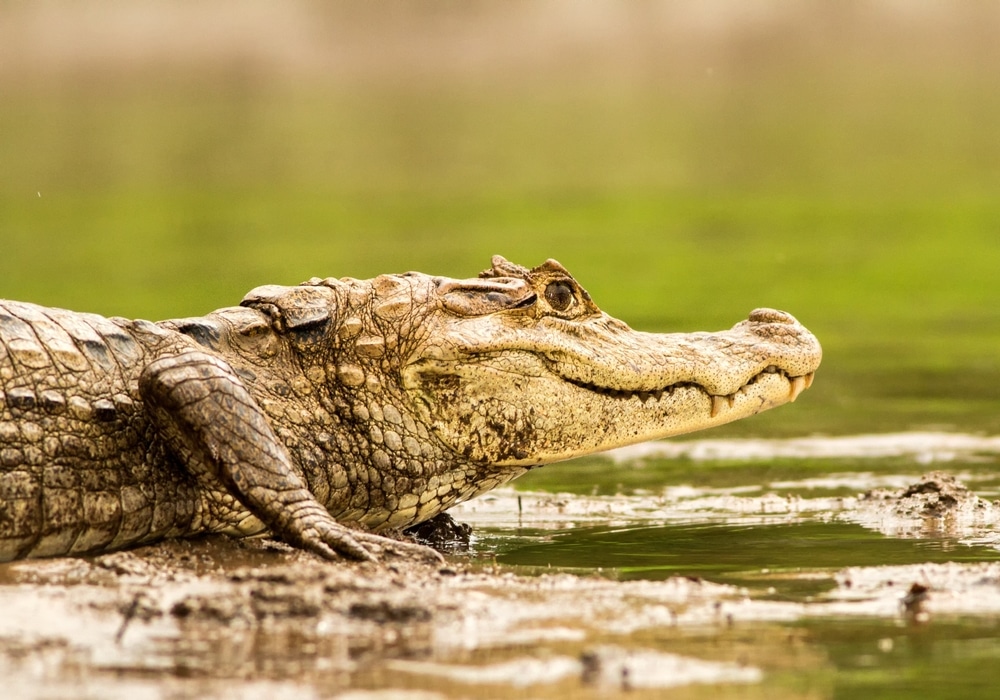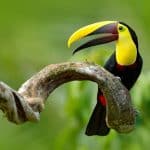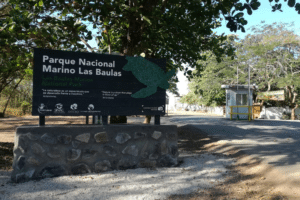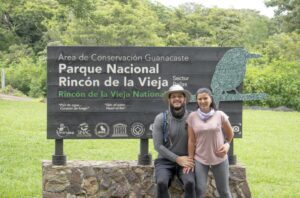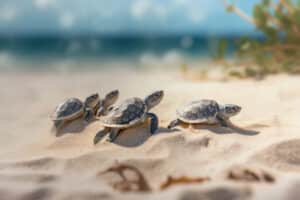Costa Rica’s great biodiversity includes an impressive number of reptiles and amphibians; if these creepy crawlers are your thing, you’ll be delighted!
Costa Rica is a place of enormous biodiversity, including a rich variety of herpetofauna that live in the rain and cloud forests and humid lowlands of the country. Amphibians and reptiles can be as colorful and fascinating as the most brightly colored macaw and as exotic-looking as a tapir.
Amphibians
Rain frogs, which are quite small (1 – 2”), have suction cup-like finger disks and live in low and middle elevation forests. The Smoky Jungle Frog can grow up to 6” and discharges a neuromuscular toxin. Glass Frogs are small, translucent green tree frogs that when placed belly down on a piece of glass, its internal organs are visible, including its beating heart. The Red-eyed Leaf Frog is vividly colored and lives, as the name implies, in trees. Poison Dart Frogs are also vibrantly colored and live in humid lowlands. They eat ants, and the resulting accumulations of formic acids probably contribute to the frogs’ poison production.
The Bufo or Giant Toad is most commonly found in gardens or other human-created habitats. With an appetite as big as it is, it eats almost everything that it can swallow: insects, small mammals, spiders, and other toads. Poisonous, it’s capable of killing dogs that eat or attack it.
Salamanders, newts, sirens (externally gilled salamanders), and amphiumas (heavy, eel-like salamanders with poorly developed limbs) are amphibians with tails. Costa Rica has many diverse species that are rarely seen because of highly specialized habitat and the corresponding remote locations.
Reptiles
Crocodiles and caimans are similar in appearance but have different behaviors. Spectacled Caimans have broader and more rounded snouts; they often retreat when disturbed. American Crocodiles tend to be larger and far more aggressive. As you head down the freeway toward the Jaco Beach, Herradura, and Playa Esterillos area of the Central Pacific, you’ll notice a lot of tourists stopped on a bridge and peering over; they are checking out the hundreds of crocodiles that hang out right there in the Tarcoles River under the bridge. Be sure to check it out, and hang on to your camera!
Sea turtles are reptiles, and Costa Rica has many important nesting sites for 4 species: Green, Olive Ridley, Hawksbill, and Leatherback. Green and Hawksbill sea turtles nest on the Caribbean coast—Greens on the North Caribbean coast, especially around Tortuguero, nesting June – October, and Hawksbills in Cahuita National Park in September and October. On the Pacific coast, Olive Ridleys come ashore at multiple sites July – November. Leatherbacks nest on both coasts: the Caribbean, March – July and the Pacific, September – March. Hawksbills are often seen foraging in Golfo Dulce.
The obvious difference between lizards, which tend to be carnivores or insectivores, and snakes is legs or the lack of them. These cold-blooded reptiles are most active on sunny days. The Green Iguana is Costa Rica’s best-known lizard; they can grow to weigh as much as 20 lbs. Other lizard species include Ctenosaurs (similar in appearance to iguanas) and crested basilisks, also known as Jesus Christ lizards for their ability to run short distances on water. Nine species of geckos are endemic to Costa Rica, eating prodigious quantities of mosquitos and cockroaches—a great reason to love them.
Most of the Costa Rican snakes are non-venomous and serve to control the country’s insect and rodent populations. Many are arboreal, while some, such as boa constrictors are terrestrial. In Costa Rica, the pit vipers include the notorious fer-de-lance, responsible for most snakebite fatalities in the country, and the bushmaster, also known as the matabuey (ox killer). The coral snake is also venomous, while the Yellow-bellied Sea Snake is from the marine family, seldom seen close to shore and only found in the Pacific.
The best way to see Costa Rica’s amphibians and reptiles is in the exhibits of places such as La Paz Waterfall Gardens or on guided day and night tours in various reserves and national parks. A trip to the Tarcoles River, whether by boat or from the bridge, will bring you as close as you care to be to crocodiles. Spectacled caimans can be seen in Manuel Antonio National Park.

